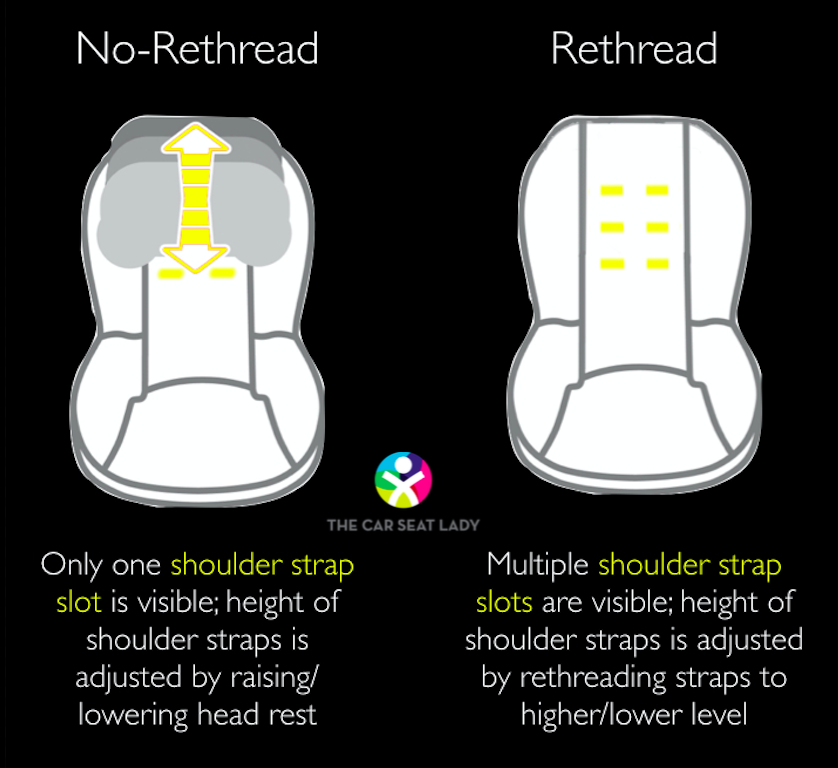All infant seats in the US have at least two positions for the child’s harness straps. This allows you to raise the straps up as your child grows taller. For a rear-facing child, the straps should be set so that they come out of the back of the car seat shell right at or a little bit below the child’s shoulders. At this setting, they serve to stop the child from sliding up the back of the car seat during a crash. Harness straps also keep the child in the proper position outside of the car, so that the child doesn’t slouch and/or slide down into an unsafe position. From the front of the car seat, the straps should look like suspenders, coming up from the child’s back and down over the shoulders.
As your child grows, the straps will come from too far down his back and must be readjusted to accommodate the child’s growing height. Your infant car seat allows for one of two methods of adjusting the harness straps up and down to accommodate different sizes–either a manually adjusted harness or a no-rethread harness.

This type of strap is found on the majority of infant car seats sold in the US. You must unhook the straps from a metal plate on a strap found underneath or on the back of the car seat, route them through the car seat to the front, and then move them up to a higher (or lower) slot, back through the car seat shell and re-secure them to the metal plate.
Benefits:
Downsides:
To avoid these errors, it may be helpful to take a photo of both the front and the back of the car seat before attempting to reroute the straps. This will give you a guide for what the straps should look like when you’re done. Always check when you are finished rerouting to make sure the straps are not twisted, are routed properly through the appropriate slot for your baby’s height, and are fully secured on the metal plate on the back of the car seat. ALWAYS check your car seat’s instruction manual to be sure you are adjusting the straps properly.
The video below shows rethreading the harness straps on an infant seat; as you can see, it shouldn’t take more than about 2 minutes.
This type of adjuster allows you to raise and lower the straps without unhooking and rerouting them. Generally you operate the adjuster by squeezing a lever or pulling on a hook or ring near the top of the car seat and raising the car seat’s headrest, which also raises the harness straps.
Benefits:
Downsides:
The video below shows an example of a no-rethread harness.
If you will be putting multiple children of different heights in your infant seat, a no-rethread harness may be a useful feature.
But because of the difficulty pulling the harness adjuster strap to tighten the straps over the baby, the extra weight the no-rethread harness adds to the carrier, and the fact that the straps will need to be raised only once or twice a year, we generally do not view the no-rethread harness as an essential feature in an infant car seat. We highly favor other features like the load leg, rigid latch, easily used seat belt lockoffs, and the ability to use a European belt path.